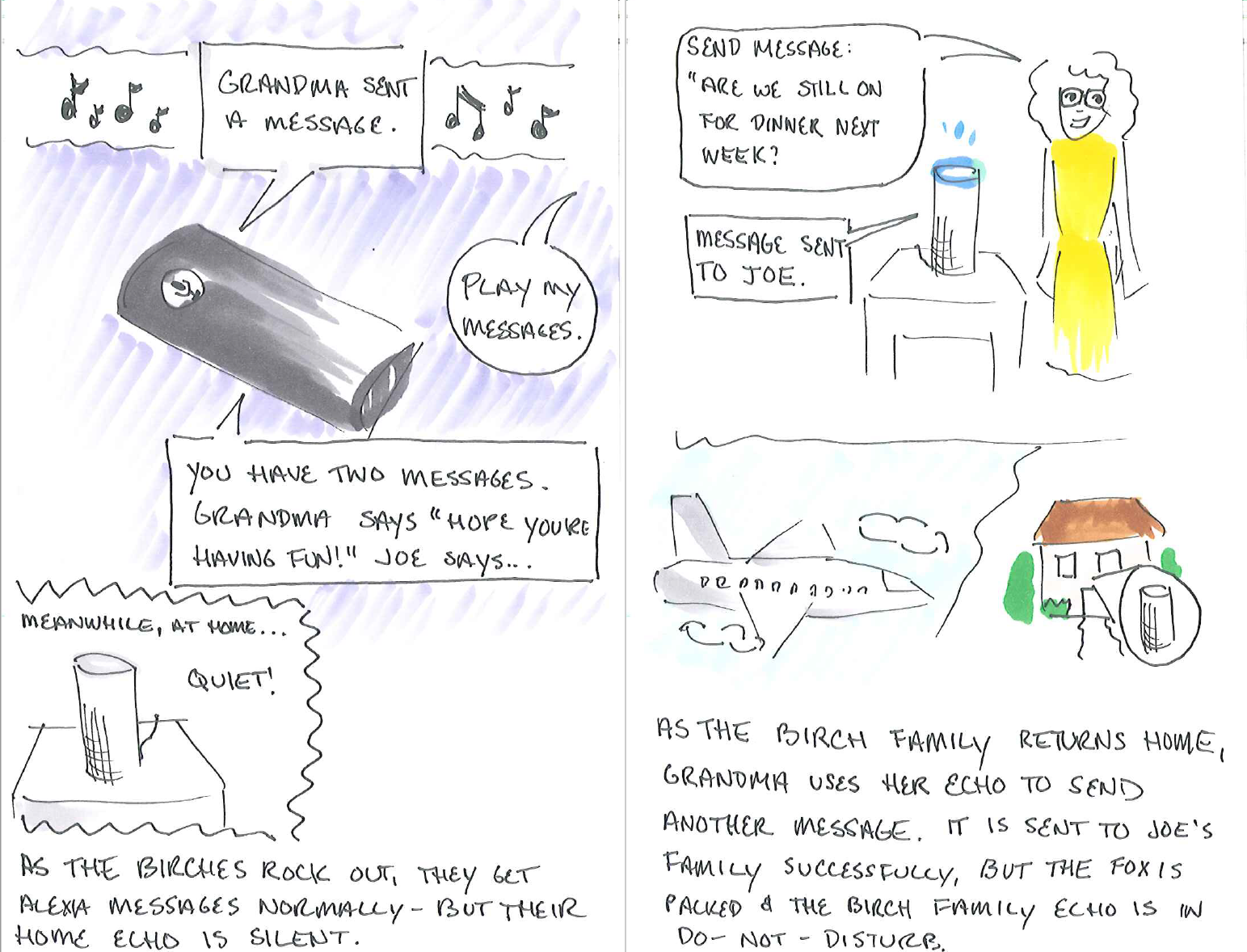In parallel with our efforts on Alexa Notifications, I was asked to drive the completion of the Do Not Disturb feature. DND applied not just to Notifications but to Communications (calls/messaging), which meant a separate team of stakeholders and faster deadlines than the longer-term Notifications project.
As with Alexa Notifications, I led the design side of this effort in partnership with Carl Mekala (and Sharbani Roy) from the product management team.
This was my most “traditional” VUI design engagement during my time on the Alexa team – while some was new-product (Echo Look) and some was more systems design (Notifications/Interrupt Model), this work was a fairly representative VUI design process. Do Not Disturb shipped with the Echo Look and the launch of Alexa Calling in Spring 2017.
Design Process
For our design process on Do Not Disturb, I started by pulling existing transcripts from Alexa users – and from lab tests – where our transcriptionists had marked a notification intent. (These customers usually didn’t know the feature wasn’t available yet, and were simply trying to get smart home or app notifications from Alexa.) That provided a basis for the mental model customers were likely to apply, and a start for our sample utterances.
Our initial discussions also involved the app team – what intents must be voice-enabled, which intents should be app-enabled, and which intents should be available in both places? Our initial focus was recurrence via the app, and one-time DND requests via voice.
Audio Mocks & Peer Critique
After a round of level-setting with product management, we set an initial group of intents. Based on the kickoff discussion and my own brainstorms, I did audio mocks of several approaches to the prompts and structure. These prompts were brought to my design peers and stakeholders for feedback via a quick email survey (a common practice on our team given the speed of iteration and our split locations.)
Early Audio Mocks: Prompts-DND
At the same time, I reached out to our audio design team with the hypothesis that a sound effect (“earcon”) might be preferable to a full spoken prompt for starting DND in certain cases, or perhaps could be used for recurring DND. This partnership resulted in a pair of sounds: DND start/stop. In the end, we decided to use the sound effects as a gate: they play after any VUI prompt when enabling DND, and before any reply when turning DND off.
Storyboarding and Sample Dialogs
As feedback from our peer critiques and stakeholders began to roll in, I pulled together a series of rough storyboards to begin fleshing out our end-to-end story. This storyboarding work paralleled our work on the sample dialogs for the Do Not Disturb feature. Below are a few example frames from one of my earlier DND storyboards. In the end, we streamlined our dialogs quite a bit – choosing to omit qualifications like “on this device” from the system’s responses.
Visual Affordances
We also worked closely with the team driving the LED and screen behaviors for Alexa devices to collaborate on expected behaviors. Our request was for an animation(s) that could pair not just with our do not disturb prompts, but could play at the end of unrelated customer-initiated prompts. The intent for these trailing LEDs was that a customer who asked Alexa a question and is looking at the device might get benefit from a visual reminder that Do Not Disturb is still enabled and might be suppressing interruptions. In this case, with the help of the hardware team we landed on a brief LED animation in purple (the lowest-impact of the available colors, suitable for darkened rooms at night).





